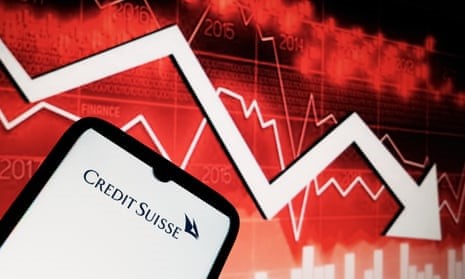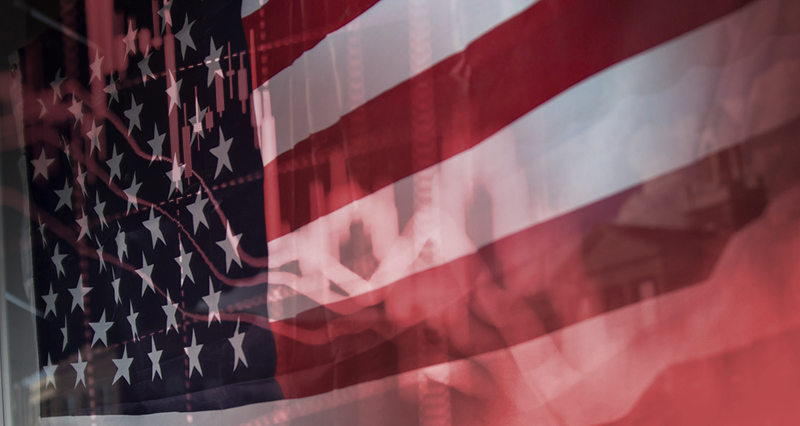By Michael Roberts *
As I write, US regional banks stock and bond prices are diving. And a major international Swiss bank, Credit Suisse, is close to bankruptcy. A financial crisis not seen since the global financial crash of 2008 appears to be unfolding. What will be the response of the monetary and financial authorities?

Back in 1928, the then US treasury secretary and banker Andrew Mellon pushed for higher interest rates in order to control inflation and credit fuelled stock market speculation. At his bequest, the Federal Reserve Board began raising interest rates and in August 1929 the Fed banged up the rate to a new high. Just two months later in October 1929, the New York Stock Exchange suffered the worst crash in its history in what was called “Black Tuesday“. History repeats.
In 1929 Mellon was undeterred. He advised the then president Hoover to “liquidate labor, liquidate stocks, liquidate farmers, liquidate real estate… it will purge the rottenness out of the system. High costs of living and high living will come down. People will work harder, live a more moral life. Values will be adjusted, and enterprising people will pick up from less competent people.” Additionally, he advocated the weeding out of “weak” banks as a harsh but necessary prerequisite to the recovery of the banking system. This “weeding out” would be accomplished through refusing to lend cash to banks (taking loans and other investments as collateral) and by refusing to put more cash in circulation. The Great Depression of the 1930s followed a major banking crash.
In 2008, when the global financial crash unfolded, at first the authorities aimed at something similar. They allowed investment bank Bear Stearns to go under. But then came another, Lehman Bros. The Federal Reserve dithered and finally decided not to save it with a bailout of credit. What followed was an almighty crash in stocks and other financial assets and a deep recession, the Great Recession. Fed chair Ben Bernanke at the time was supposedly a scholar of the Great Depression of the 1930s and yet he agreed for the bank to fail. Subsequently, he recognized that as ‘lender of last resort, the job of the Fed was to avoid such collapses, particularly for those banks that are ‘too big to fail’ which would only spread the busts across the whole financial system.
It’s clear that now governments and monetary authorities want to avoid ‘liquidate, liquidate’ and the Lehmans crash, even if such a policy would clear away the ‘dead wood’ and “rotteness of the system” for a new day. Politically, it would be disastrous for governments presiding over yet another banking collapse; and economically, it would probably trigger a new and deep slump. So it’s better to ‘print more money’ to bail out the banks’ depositors and bond holders and avert financial contagion – the banking system being so interconnected.
That’s what the authorities eventually did in 2008-9 and that it what they will do this time too. Officials were initially unsure about rescuing Silicon Valley Bank. They quickly changed their minds after signs of nascent bank runs across the US. Interviews with officials involved or close to the discussions paint a picture of a frenzied 72 hours. Credit Suisse too is likely to get similar financial support.
There are supporters of Mellon’s approach today and they still have a point. Ken Griffin, founder of a large hedge fund Citadel, told the Financial Times that the US government should not have intervened to protect all SVB depositors. He went on: “The US is supposed to be a capitalist economy, and that’s breaking down before our eyes…There’s been a loss of financial discipline with the government bailing out depositors in full.” Griffin added. We can’t have “moral hazard,” he said. “Losses to depositors would have been immaterial, and it would have driven home the point that risk management is essential.”
Moral hazard is a term used to describe when banks and companies reckon that they can always get money or credit from somewhere including the government. So if they make reckless speculations that go wrong, it does not matter. They will get bailed out. As Mellon might have put it: it’s immoral.
The other side of the argument is that banks that get into trouble should not mean that those who deposit their cash with them should not lose it through no fault of their own. So governments must intervene to save the depositors. And they too have a point. As another hedge fund billionaire, Bill Ackman, put it when the SVB collapse emerged, the Federal Deposit Insurance Corporation must “explicitly guarantee all deposits now” because “our economy will not function nor our community and regional banking system”. Mark Cuban expressed frustration with the FDIC insurance cap that guarantees up to $250,000 in a bank account as being “too low”; he also insisted the Federal Reserve buy up all of SVB’s assets and liabilities. Rep. Eric Swalwell, a California Democrat, joined the chorus, tweeting that “We must make sure all deposits exceeding the FDIC $250k limit are honored.”
The irony here is that those demanding bailouts now are the very venture capitalists who usually stand firmly for the ‘free market and no government intervention’. Another bailout supporter is one Sacks, a longtime associate of investor Peter Thiel, who fervently believes in ‘free markets’ and in ‘capitalism’. But it was Thiel’s Founders Fund that helped kick off the bank run that sank SVB in the first place.
FT columnist Martin Wolf explained the dilemma. “Banks fail. When they do, those who stand to lose scream for a state rescue.” The dilemma is that “if the threatened costs are big enough, they will succeed. This is how, crisis by crisis, we have created a banking sector that is in theory private, but in practice a ward of the state. The latter in turn attempts to curb the desire of shareholders and management to exploit the safety nets they enjoy. The result is a system that is essential to the functioning of the market economy but does not operate in accordance with its rules.” So it’s moral hazard because the alternative is Armageddon. As Wolf concludes: “it’s a mess.”
So what’s the solution offered to avoid these continual banking messes? Liberal economist Joseph Stiglitz tells us that “SVB represents more than the failure of a single bank. It is emblematic of deep failures in the conduct of both regulatory and monetary policy. Like the 2008 crisis, it was predictable and predicted.” But having told us that regulation was not working, Stiglitz argues that what we need is more and stricter regulation! “We need stricter regulation, to ensure that all banks are safe.” Well, how’s that worked up to now?
Nobody has anything to say for public ownership of the banks; nothing about making banking a public service and not a vast sector of reckless speculation for profit. SVB collapsed because its owners bet on rising government bond prices and low interest rates to boost their profits. But it went pear-shaped and now other bank customers will pay for this in increased fees and losses for the Federal Reserve – and there will lees funding of productive investment to pay for yet another banking mess.
This is what I said 13 years ago: “The answer to avoiding another financial collapse is not just more regulation (even if it was not watered down as the Basel III rules have been). Bankers will find new ways of losing our money by gambling with it to make profits for their capitalist owners. In the financial crisis of 2008-9, it was the purchase of ‘subprime mortgages’ wrapped up into weird financial packages called mortgage backed securities and collateralised debt obligations, hidden off the balance sheets of the banks, which nobody, including the banks, understood. Next time it will be something else. In the desperate search for profit and greed, there are no Promethean bounds on financial trickery.”
Let us return to the dilemma of choosing between ‘moral hazard’ and ‘liquidation’. As Mellon said, by liquidating the failures, even if it means a slump, that is a necessary process for capitalism. It’s a process of ‘creative destruction,’ as 1930s economist Joseph Schumpeter described it. Liquidation and the destruction of capital values (along with mass unemployment) can lay the basis for a ‘leaner and fitter’ capitalism able to renew itself for more exploitation and accumulation based on higher profitability for those that survive the destruction.
But times have changed. It has become increasingly difficult for the strategists of capital: the monetary authorities and governments to consider liquidation. Instead ‘moral hazard’ is only option to avoid a major slump and political disaster for incumbent governments. But bailouts and a new wound of liquidity injections would not only completely reverse the vain attempts of the monetary authorities to control still high inflation rates. It also means the continuation of low profitability, low investment and productivity growth in economies unable to escape from their zombie state. Just more long depression.
* Michael Roberts worked in the City of London as an economist for over 40 years. He has closely observed the machinations of global capitalism from within the dragon’s den. At the same time, he was a political activist in the labour movement for decades. Since retiring, he has written several books. The Great Recession – a Marxist view (2009); The Long Depression (2016); Marx 200: a review of Marx’s economics (2018): and jointly with Guglielmo Carchedi as editors of World in Crisis (2018). He has published numerous papers in various academic economic journals and articles in leftist publications.
This article was previously published on his blog.









Podemos ir observando las diferentes estrategias políticas y ciertamente están creando una crisis más aguda en la economía de Estados Unidos y como está desarrolla sus enfoques en otros lugares como parte de su acostumbrada estrategias económicas y de dominación.